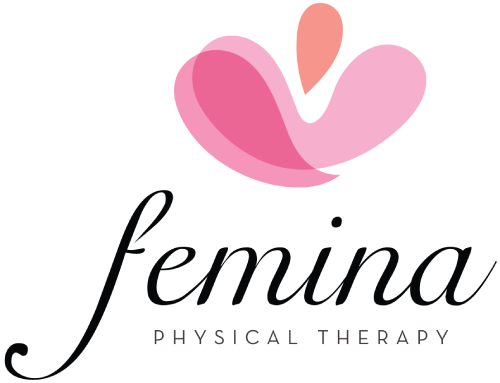Anorectal symptoms such as hemorrhoids, anal fissures, and anal pain are common during pregnancy and the postpartum period and can have a negative impact on one’s quality of life. They can be one cause of uncomfortable pain in the butt and anal area, but read on—there is hope!
This article will go over:
- Statistics related to hemorrhoids, anal and rectal pain during pregnancy
- Contributing factors to hemorrhoids, anal and rectal pain
- Birth Prep to improve your delivery experience
- How pelvic floor physical therapy can help!
How Common Are Hemorrhoids During Pregnancy?
The incidence of symptomatic hemorrhoids during pregnancy varies between 24-38%, increasing to 85% in the last trimester. Hemorrhoids are also very prevalent in the first 3 months postpartum, with the prevalence increasing with age and parity (the number of times you’ve delivered).
How Did I Get Hemorrhoids?
Many factors contribute to the development of hemorrhoids, including various musculoskeletal, hormonal and circulatory changes that occur during pregnancy.
- Increased intra-abdominal pressure compresses the pelvic veins, the inferior vena cava, and results in venous dilation (swelling or widening of the veins)
- Increased progesterone levels also lead to venous dilation and swelling
- Increased tension at symphysis pubis caused by high progesterone levels
- Physiological changes in blood volume that increases by 25-50% during the third trimester
Constipation increases the risk of hemorrhoids during pregnancy and prevalence of constipation in pregnancy by 11 to 38%.
Sex hormones are a large factor contributing to high rates of constipation in pregnancy, especially in the first trimester.
- Rising levels of progesterone cause relaxation of smooth muscle which leads to decrease in bowel motility.
- This, combined with growth of the fetus prevents movement of feces through the bowel, making defecation mechanically difficult.
- Prolonged straining during defecation due to constipation leads to an increase in intra-abdominal pressure, contributing to hemorrhoids.
Other factors that contribute to the development of hemorrhoids:
- High body mass index (BMI)
- Iron supplementation
- Hypermobility associated with connective tissue disorders
- Low fiber and water intake
- Sedentary lifestyle
- Higher number of pregnancies
- Increased anxiety and/or depression (due to nervous system effects)
Previous prolonged delivery, higher birth weight of more than 8.5 pounds, traumatic second stage of labor all additionally contribute to increased risk of postnatal hemorrhoids and anal fissures.
The Role Of Pelvic Floor Physical Therapy (PFPT)
Pelvic floor physical therapy for hemorrhoids, anal fissures and rectal pain focuses on relaxation of tight (or hypertonic/overactive) muscles, education on proper bowel mechanics and strategies to improve bowel movements, nervous system downtraining exercises (include Vagus nerve activation), restoring postural alignments, strengthening weak muscles and rehabilitating other aspects of the pelvic floor muscles. The pelvic floor muscles support the uterus, bladder, and rectum and when dysfunctional, can lead to developing hemorrhoids, anal or rectal pain. Pelvic Floor Physical Therapy can be instrumental in managing and alleviating hemorrhoid and other symptoms during and after pregnancy.
Benefits of Pelvic Floor Physical Therapy for Hemorrhoids
- Improved Circulation: Pelvic floor exercises can enhance blood flow in the pelvic region, reducing swelling and discomfort associated with hemorrhoids.
- Strengthening Pelvic Muscles: A stronger pelvic floor can improve management of intra-abdominal pressure, potentially preventing the development or worsening of hemorrhoids.
- Enhanced Bowel Function: PFPT can address constipation by promoting better bowel habits and reducing straining during defecation.
Teaching Optimal Labor and Delivery Positions
An often-overlooked benefit of pelvic floor physical therapy is the education it provides regarding labor and delivery positions. Prolonged labor can increase the risk of hemorrhoids due to sustained pressure on the pelvic floor region. Our physical therapists can teach positions that:
- Reduce the risk of prolonged labor by promoting effective pushing strategies.
- Minimize strain on the pelvic floor muscles, thereby decreasing the likelihood of developing or worsening hemorrhoids during delivery.
- Encourage proper alignment and relaxation to facilitate a smoother birthing process.
- Reduce risk of perineal tearing
Conclusion
Hemorrhoids and anal and rectal pain are a prevalent issue during pregnancy and the postpartum period, influenced by factors such as age, multiple pregnancies, and constipation. Pelvic floor physical therapy offers a non-invasive, comprehensive approach to manage symptoms, prepare for labor, and protect pelvic health.
If you’re pregnant or postpartum, consulting with a pelvic floor physical therapist can provide personalized strategies for symptom relief, improved bowel habits, and labor preparation, ultimately enhancing your comfort and quality of life. Contact us at Femina to get the pelvic health solutions you deserve!
References:
-
Gülören, Gülbala PT, PhD, Çınar, Gamze Nalan PT, MSc, et al. Hemorrhoids, Anorectal Symptoms, and Related Risk Factors in Pregnancy and the Postpartum Period: A Follow-up Study. Journal of Women’s & Pelvic Health Physical Therapy 48(3):p 184-193, July/September 2024. | DOI: 10.1097/JWH.0000000000000308
-
Longo SA, Moore RC, Canzoneri BJ, Robichaux A. Gastrointestinal conditions during pregnancy. Clin Colon Rectal Surg. 2010;23(2):80–89. doi:10. 1055/s-0030-1254294.
-
Bužinskiene D, Sabonyte-Balšaitienė Ž, Poškus T. Perianal diseases in pregnancy and after childbirth: frequency, risk factors, impact on women’s quality of life and treatment methods. Front Surg. 2022;9:788823. doi:10. 3389/fsurg.2022.788823

